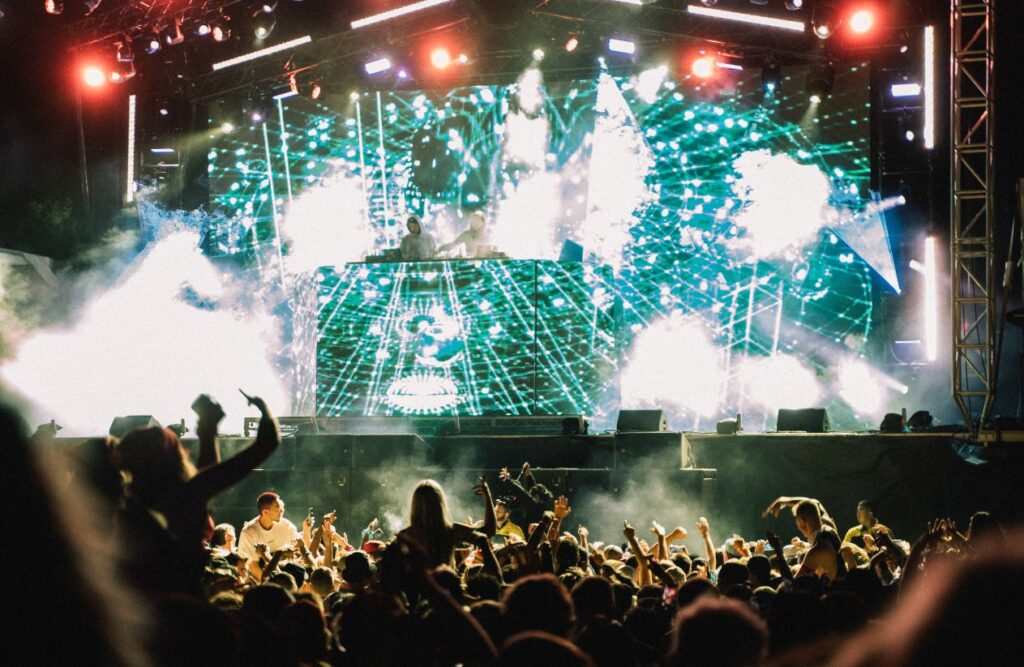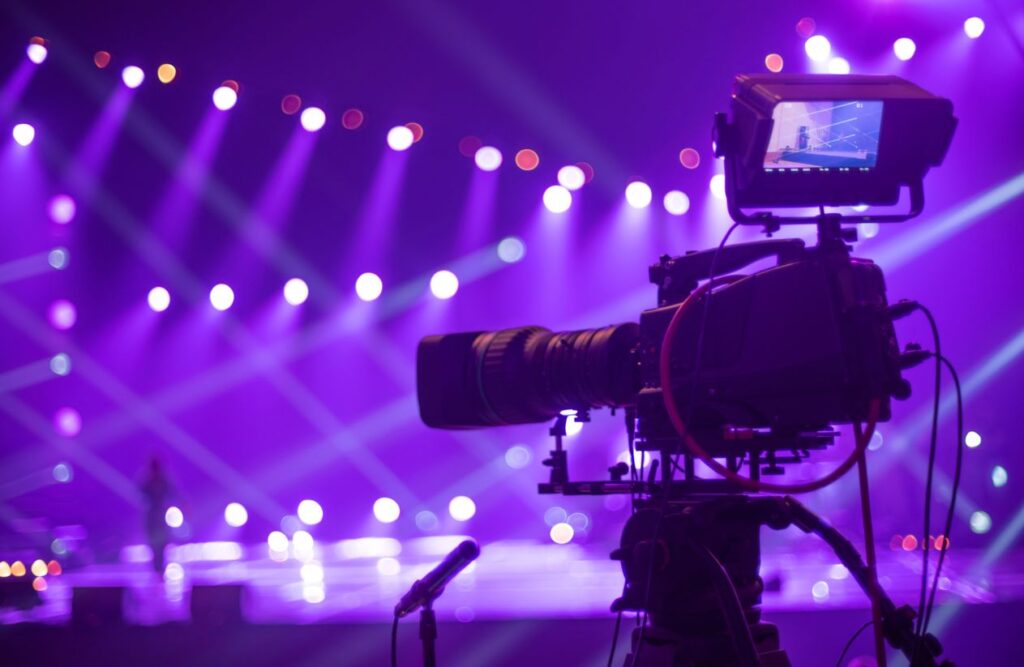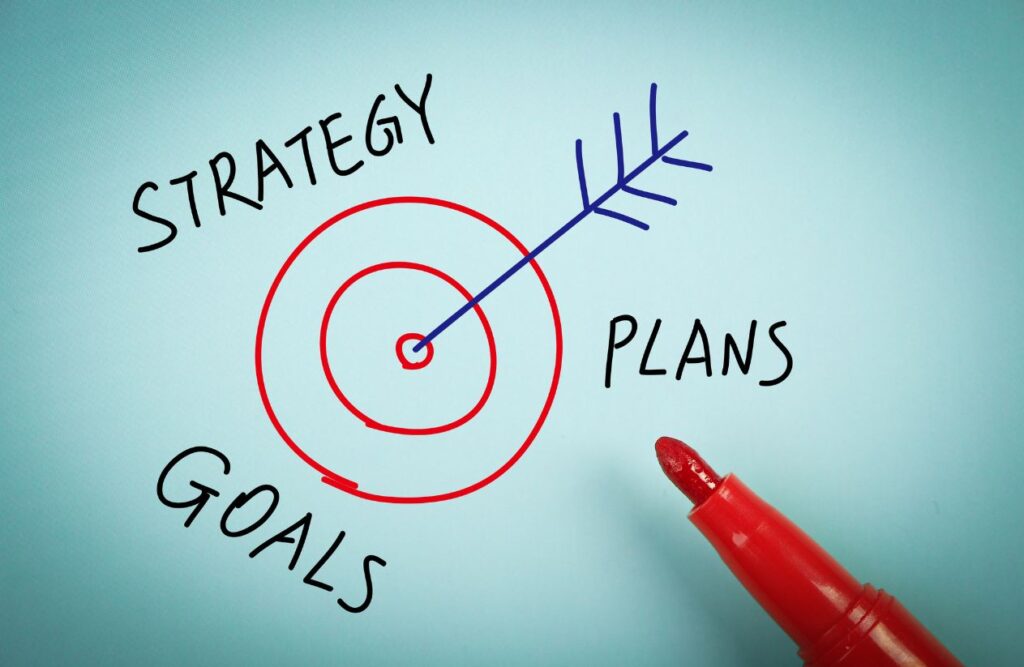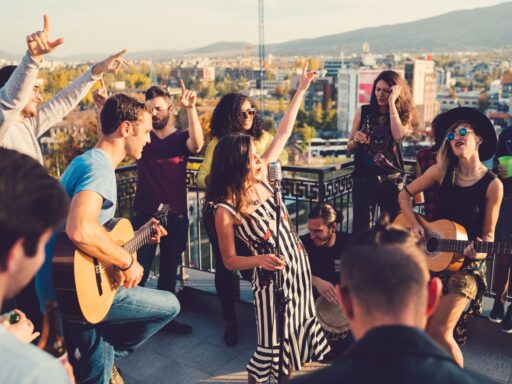Ways to Engage Your Event Guests: Unlocking the Potential of Interactive Entertainment

Interactive entertainment stands as a formidable pillar in the realm of event engagement, merging technology with creativity to captivate and hold an audience’s attention.
With advancements in digital tools and software, the opportunities to create memorable,interactive experiences are limitless.
Engaging your attendees through interactive entertainment not only boosts their overall experience but also fosters a stronger connection to the event’s message or theme.
Embracing Technological Innovations
The rise ofvirtual reality (VR), augmented reality (AR), and mixed reality (MR) technologies has opened up new avenues for immersive experiences.
Imagine offering your event attendees the chance to explore a virtual replica of an archaeological site or an interactive AR game that encourages networking.
Such technologies not only entertain but also educate and engage participants on a deeper level. Interactive apps can also enhance the experience by allowing users to navigate the event, participate in live polls, or interact with speakers in real-time.
Personalizing the Experience
Tailoring theinteractive elements of your event to align with the interests and preferences of your audience can significantly amplify their engagement.
Personalization can range from customizable avatars in a virtual event landscape to interactive workshops where participants can choose their learning path.
By incorporating analytics and feedback mechanisms, you can gain insights into attendee preferences and adjust theinteractive content to better suit their tastes and interests in future events.
Leveraging Gamification
Gamification is another powerful strategy to enhance interactive entertainment by incorporating game design elements in non-game contexts.
This approach can be particularly effective in encouraging participation, fostering competition, and motivating attendees to achieve specific goals.
From scavenger hunts using QR codes to leaderboard challenges tracking participation across multiple activities, gamification creates a dynamic and competitive environment that can spur engagement and elevate the overall event experience.
Incorporating interactive entertainment into your event planning not only sets the stage for a memorable experience but also opens up new possibilities for engagement.
By leveraging the latest technologies, personalizing the experience for your audience, and utilizing gamification strategies, you can unlock the full potential of interactive entertainment to captivate and engage your audience in once unimaginable ways.
Crafting Memorable Experiences with Innovative Technology

The realm of event planning is perpetually evolving, with innovative technologies playing a pivotal role in transforming how experiences are crafted and perceived by attendees.
The integration of cutting-edge tech not only elevates the attendee experience but also sets the stage for creating truly memorable events.
Also Read:Event Planning Made Simple: A Step-by-Step Guide
The Power of Augmented and Virtual Reality
Augmented Reality (AR) and Virtual Reality (VR) technology have ushered in a new era of immersive event experiences.
AR overlays digital information onto the real world, enabling interactive experiences that can enhance product demonstrations or historical tours.
VR, on the other hand, transports users to entirely virtual environments, ideal for virtual site visits or experiencing scenarios that are impossible in the physical world.
These technologies not onlycaptivate audiences but also foster a deeper level of engagement by making experiences more personal and impactful.
Leveraging Mobile Apps for Enhanced Engagement
Mobile applications have become indispensable tools in the context of modern events.
They serve as platforms for delivering personalized content, facilitating networking, and much more.
Custom event apps can include features such as schedules, speaker bios, interactive maps, and live polling.
They provide attendees with the convenience of accessing event-related information at their fingertips while also offering organizers real-time feedback and analytics.
This level of interactivity and accessibility significantly enriches the attendee experience andencourages active participation.
Interactive and Social Media Walls
Interactive walls andsocial media feeds are becoming increasingly popular in events of all sizes.
These platforms encourage attendees to share their experiences in real time, creating a dynamic and interactive atmosphere.
Whether it’s through live tweets, Instagram stories, or bespoke posts, these walls aggregate content from various social media platforms and display them in a visually appealing format.
Not only do they amplify engagement, but they also facilitate a sense of community and collective experience among participants.
Harnessing these innovative technologies allows event planners and organizers to craft memorable experiences that resonate with attendees long after the event concludes.
By integratingAR and VR for immersive experiences, leveraging mobile apps for engagement, and utilizing social media walls for interactive communication, events can transcend traditional boundaries and set new standards for audience engagement.
Bridging the Gap: Educational Content that Entertains

In today’s fast-paced world, capturing and maintaining an audience’s attention at events can be a formidable challenge.
The traditional divide between educational content and entertainment is rapidly blurring, creating a new paradigm for event engagement: edutainment.
This approach infuses educational sessions with fun, interactive elements, ensuring that attendees are not only informed but also genuinely entertained.
Integrating Storytelling in Educational Sessions
One effective strategy to make educational content more engaging is through the art of storytelling. Humans are naturally drawn to stories—they are how we make sense of the world.
By weaving key messages into narratives, speakers can captivate their audiences more effectively. These stories can range from personal anecdotes that illustrate a speaker’s point to fictional tales that embody the lesson being taught.
The key is to connect with the audience on an emotional level, making the information more relatable and memorable.
Utilizing Interactive Technology
Technology has opened up new vistas for making educational content entertaining. Interactive polls,live-tweeting sessions, and augmented reality (AR) experiences can transform static presentations into dynamic interactions.
For example,using AR to simulate real-life scenarios where the audience can apply what they’re learning not only reinforces the material but also adds an element of enjoyment.
Similarly, incorporating apps that allow real-time feedback or Q&A encourages participant engagement, making them feel like an active part of the experience rather thanpassive receivers of information.
You can also read our article about“Booking Entertainment for Events: Essential Tips and Tricks”
Games and Competitions: Learning Through Play
Gamification is another powerful tool at the disposal of event organizers seeking to merge education with entertainment.
Turning learning objectives into games or competitions can significantly enhance engagement levels.
Whether it’s a quiz-style game that tests knowledge on a subject or a team competition that solves problems together, gamification injects a sense of excitement and competitiveness into learning.
It not only makes theeducational content more enjoyable but also fosters a deeper connection among participants as they collaborate or compete with one another.
Embracing these strategies requires a shift in perspective, seeing educational content not as something to be endured but as an opportunity for meaningful and enjoyable engagement.
By thoughtfully integrating elements of entertainment into educational sessions, event planners can create memorable experiences that resonate long after the event concludes.
Personalization: The Key to Participant Involvement

In today’sevent planning landscape, achieving deep engagement from your participants isn’t just a nice-to-have; it’s essential for the success and memorable impact of your event.
Understanding and implementing personalization strategies is akin to unlocking a treasure chest of attendee satisfaction and involvement.
The more tailored the experience, the more it resonates with each attendee, fostering a sense of belonging and appreciation that elevates theoverall event experience.
Understanding Your Audience
The first step in personalizing your event is to gain a thorough understanding of your audience.
This involves collecting and analyzing data on their preferences, interests, and past behavior.
Advanced registration systems and social media analytics can provide invaluable insights into what your participants expect from the event.
Crafting personas or profiles for different attendee segments can help in tailoring content, activities, and communication strategies that speak directly to varied groups within your audience.
Customizable Experiences
Once you have a solid grasp on who your attendees are, the next step is to design aspects of the event that they can personalize themselves.
This could range from choosing breakout sessions based on their interests, to customizing meal plans to suit dietary restrictions.
Technology plays a pivotal role here, with apps and platforms offering attendees the ability to tailor their event journey right from registration through to feedback after the event.
Interactive elements such as live polls, Q&A sessions, and digital networking opportunities further enhance personal engagement by allowing attendees to shape the event in real time according to their preferences.
Feedback Loops and Continuous Improvement
The cycle of personalization doesn’t endwith the event. Gathering feedback through surveys, social media interactions, and direct conversations provides crucial insights that can be used to refine and improve future events.
This ongoing loop of feedback and adaptation shows your commitment to meeting the evolving needs and desires of your audience, ensuring that each event is more engaging and personalized than the last.
By viewing each event as an opportunity to learn and evolve, you create a dynamic environment that continuously strives to understand and cater to the unique makeup of your audience, fostering deeper connections and involvement at every touchpoint.
Looking for a performer for the event? Below is the list of our most recommended performers that you can hire:
Ways to Engage Your Event Guests- FAQ Section
Event professionals, with their vast experience and expertise, often encounter a range of concerns when planning and executing events. This section aims to address some of the most common questions and worries, providing practical solutions and innovative approaches.
How Can We Enhance Attendee Engagement?
Tailor your content and activities to match their interests and industry trends, Incorporating interactive elements like Q&A sessions, live polls, and gamification can significantly boost engagement.
What Strategies Can We Employ to Maximize Event Attendance?
Maximizing event attendance requires a multifaceted approach. Ensure your event stands out through unique value propositions and compelling themes. Early marketing campaigns, utilizing social media teasers, influencer partnerships, and personalized email invitations, can spark initial interest and maximize event attendance.
How Do We Measure Event Success Accurately?
Start by setting clear, quantifiable goals before the event. Collect data through surveys, app analytics, and social media sentiment analysis to gauge attendee experiences.






